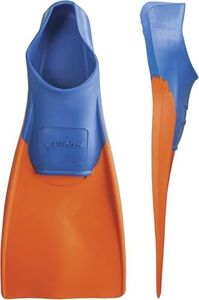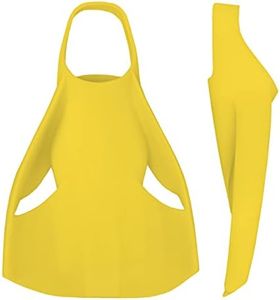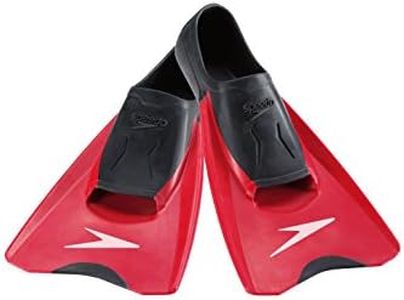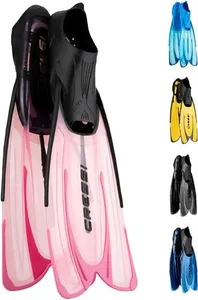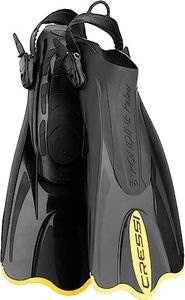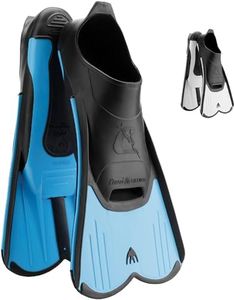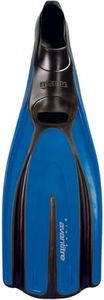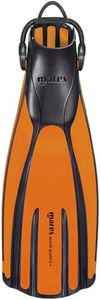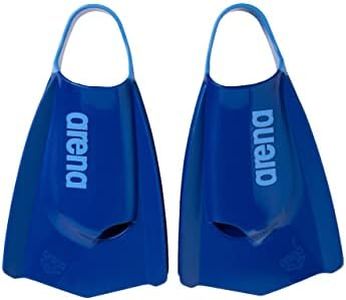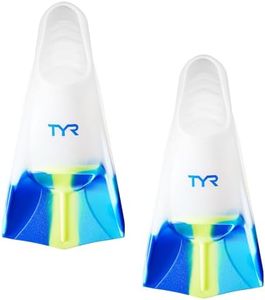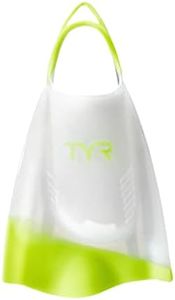We Use CookiesWe use cookies to enhance the security, performance,
functionality and for analytical and promotional activities. By continuing to browse this site you
are agreeing to our privacy policy
10 Best Swimming Fins
From leading brands and best sellers available on the web.Buying Guide for the Best Swimming Fins
Choosing the right swimming fins can greatly enhance your swimming experience, whether you are training for speed, improving technique, or simply snorkeling for fun. The best approach is to understand how different features of fins affect comfort, performance, and suitability for your intended use. Carefully look at the key specifications, think about how and where you plan to use the fins, and match your choice to your swimming style and goals.Fin LengthFin length refers to how long the blades of the fins are, which affects your speed and control in the water. Longer fins move more water, providing more propulsion with each kick, making them popular for snorkeling or easy recreational swimming. Shorter fins offer less resistance, promoting a faster kick and are preferred for swim training or improving technique. If you are a beginner or looking to strengthen your legs, mid-length fins may offer a balanced experience. Consider your main activity: longer fins for relaxed swimming and exploring, shorter fins for training or pools.
Blade StiffnessBlade stiffness measures how flexible or rigid the fin's blade is, influencing effort and power. Stiffer blades generate more thrust but require stronger leg muscles, which can tire you quickly. Softer blades are easier to kick and gentler on the joints, suitable for beginners or long sessions. For powerful swimmers or those seeking rapid speed, a stiffer blade may be ideal, while casual swimmers should look for a flexible blade for comfort and ease.
Foot Pocket TypeThis is the part of the fin where your foot fits, and it comes as either open heel or full foot. Open heel fins have adjustable straps, often worn with booties, making them adaptable for different foot sizes and ideal for cold water or rocky entry points. Full foot fins cover the whole foot and are used barefoot, which are lighter and streamlined for warm water and pool use. If you swim in warmer environments and prioritize a snug fit, full foot fins are your best choice, while open heel fins work better for cooler waters or variable fit needs.
MaterialFin blades can be made from rubber, silicone, or composite materials. Rubber is flexible and often heavier, providing comfort and durability, while silicone is softer and offers more comfort but can be slightly less durable. Composite blades combine materials for a mix of stiffness and flexibility. For frequent, vigorous use, look for robust materials like rubber or composites; for casual or comfort-focused use, silicone may be preferable.
Size and FitFit refers to how comfortably the fins hug your feet. A poor fit can cause blisters or foot cramps, while a good fit ensures efficiency and enjoyment in the water. Try to select fins that mirror your actual foot size, remembering that sizing can vary between manufacturers. If you're in between sizes, adjustable or open heel fins offer more flexibility. Your primary goal is to have a snug, secure fit that still allows for easy removal, especially after your feet are wet.
